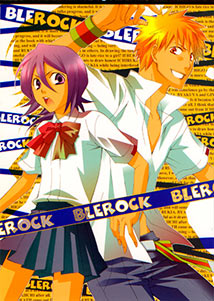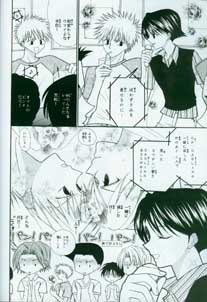Symbiotic Fanfic
FringeHog describes a talk by Daniel Pink on a note-worthy innovation in copyright practice pioneered by manga fans and manga publishers in Japan. Unlike many major publishers in the West, manga publishers in Japan have been tolerating fanfic, or fan created fiction, based on their copyrighted characters. This could be an “existence proof” that symbiosis with prosuming fans might work for other publishers/producers of fiction.
…They were they buying fan-created, self-published manga, known as “dojinshi.” Dojinshi often feature copyrighted characters and material; amateur writers riff on established works, remixing the plots and characters, and creating new storylines (for instance a series called BLEACH centers around the chaste relationship of the main characters, but dojinshi versions feature the characters hooking up). How do fans repurpose copyrighted material without drawing legal fire? Via an unwritten, implicit agreement between dojinshi writers and established media companies [in Japan], what Pink refers to as “anmoku no ryokai” (literally: “agreement or understanding”). Why? Why would media companies look the other way to clear-cut violations of copyright law? In essence, it’s a symbiotic relationship: by ceding some control of their material to dojinshi writers, media companies get 1) customer care (doinjinshi drives sales of original material) 2) a talent market for new, emerging writers and 3) free market research (dojinshi sales are indicators of trends in original series). The short version is: involving the fans and ceding control is actually GOOD for business.


However, I don’t have any data for the “partnership” Pink claims dojinshi have with mainline Japanese publishers. Here is what one dojinshi collecting site says about the copyright status:
The copyright issue of doujinshi is a bit iffy in Japan. However, because doujinshi is priced only to cover the expenses of printing them, and since many professional mangaka (manga artists) got their start doing doujinshi (like CLAMP), most companies tolerate them. Some mangaka and mangaka assistants release doujinshi even after going professional. For example, Tanemura Arina’s art assistants regularly release dojin (including romantic hentai dojin!) based on Tanemura’s manga series; their books are released under the circle name Strawberry Lunch. Akamatsu Ken, creator of Love Hina, still releases many doujinshi (including hentai dojin) for various anime/manga series. Takeuchi Naoko, the creator of Bishoujo Senshi Sailor Moon, released a sixth artbook that was technically a doujinshi; called “Infinity,” the artbook featured Sailor Moon artwork by her friends, including professional mangaka, and by people involved with Sailor Moon (such as the anime seiyuu).
It is worth noting that to my quick glance most dojinshi appear to be pornographic or at least erotic in the Kirk/Spock vain, so there is plenty of motivation to not have your trademark characters engaged in such versions. Most dojinshi are printed in very small self-published runs, and there are tens of thousand listed in databases, so it may simply be a matter of too many small fry to chase. Toleration may be the most practical solution.


